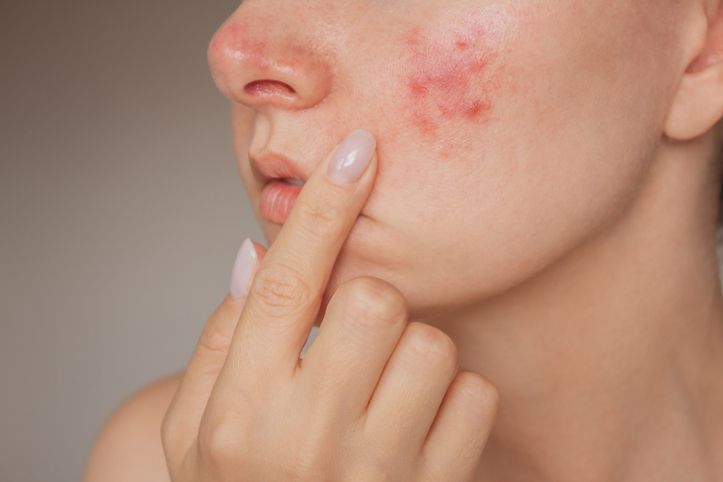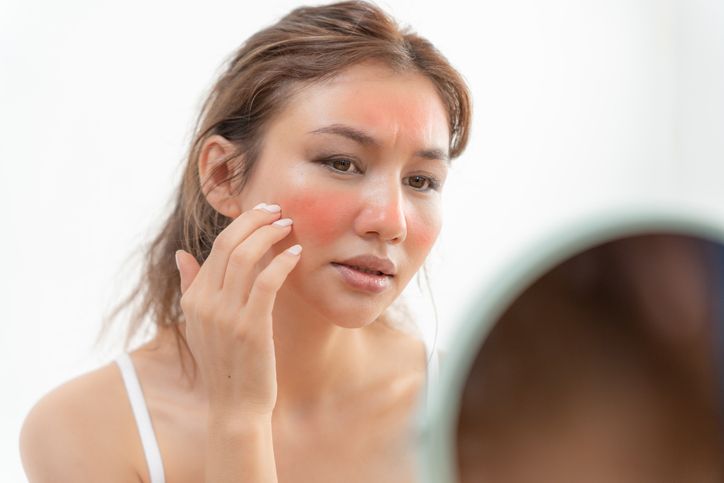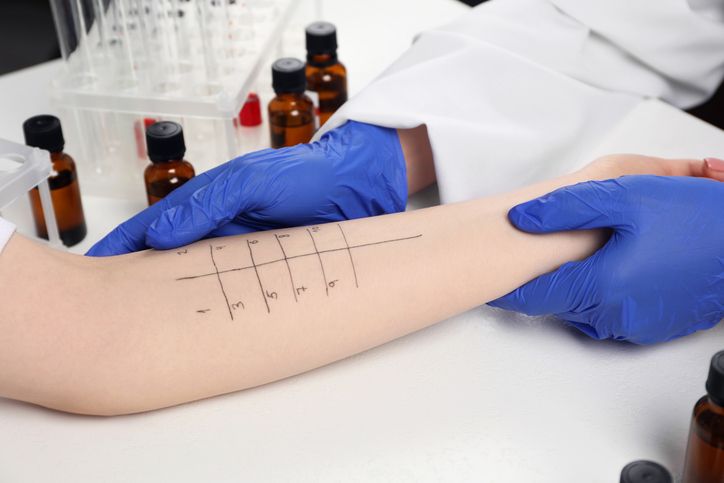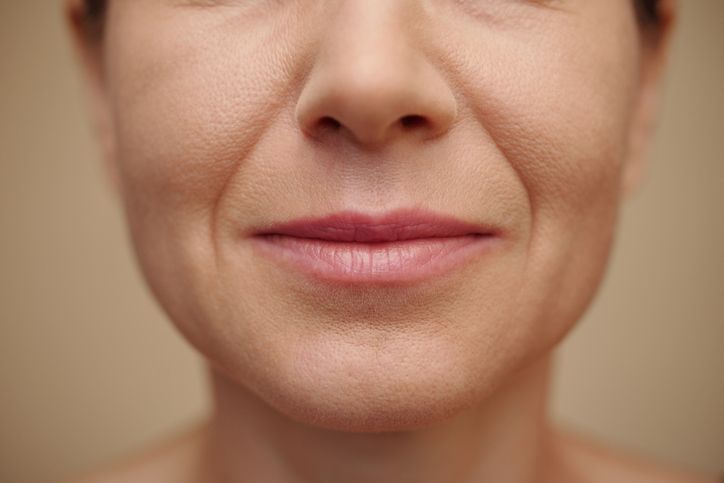
- Home
- Trend
- Weight Loss Strategies
- Acne Tips
- Hair Health Information
- Blemish Removal Tips
- Acne Scar Removal Tips
- Muscle Building Techniques
- Intimate Care Tips
- Postpartum Intimate Care
- Eye Bags Wiki
- Tips for Face Slimming
- Secret of Permanent Hair Removal
- Breast Enlargement Tips
- Cure to Snoring
- Marionette Lines
- Skin-Tightening Secrets

免費體驗
Acne Treatment
1 Minute Self-Registration
Date should not be before minimal date
Dealing with oily skin and acne can often feel like you're in a never-ending battle with your complexion. Enter salicylic acid—a real game-changer in the skincare world and possibly your new best friend. Let's get into the details of why this ingredient is so effective and how you can make the most of it in your skincare routine.
1
What is Salicylic Acid and How Does it Work on Acne?

So, what's the deal with salicylic acid? Well, it's a beta hydroxy acid (BHA) that's known for its superpowers in fighting acne. You'll find it in various forms—gels, creams, lotions, and toners—and its job is to get deep into your pores. Once there, salicylic acid breaks down the bonds between dead skin cells, encouraging your skin to let go of the old and welcome the new.
This isn’t just about shedding skin, though. Salicylic acid tackles acne by reducing inflammation and swelling, making those blemishes less noticeable. It also cuts down on sebum production, hitting acne right at its source. Plus, its ability to dive deep into pores means it can clear out the gunk that causes breakouts in the first place.

2
Who Should Use Salicylic Acid?

If your skin leans toward the oily side or if you're frequently greeting new pimples, salicylic acid might just be what you need. It's particularly effective for those dealing with surface-level acne like blackheads and whiteheads that pop up when oil and dead skin cells get too cozy in your pores.
- Exfoliating Toner 101: Skincare Benefits + 5 Best Toner Picks for Smooth, Hydrated Skin
- The 7 Amazing Benefits Of Toner: 3 Key Tips For Choosing The Right Toner!
- Exfoliation: Why Do You Need To Exfoliate? Is It Safe For Sensitive Skin?
- How Does Pimple Patch Improve Acne and Breakout? What Are the 10 Best Pimple Patches?
3
Benefits of Salicylic Acid

Exfoliate Dead Skin Cells
Think of salicylic acid as your skin’s personal exfoliator. Regular use helps clear away the dead cells that can lead to clogged pores and dull skin, keeping your complexion fresh and vibrant.
Shrink Pores
Feeling like your pores take center stage on your face? Salicylic acid can help minimize their appearance by unclogging and cleansing them, which in turn makes them look smaller and your skin smoother.
Reduce Excess Oil
Nobody likes that midday shine on their face. Salicylic acid comes to the rescue by helping to control sebum production, so you can enjoy a more matte complexion throughout the day.
Calm Inflammation and Redness
It’s also a peacekeeper for your skin. Salicylic acid reduces the redness and swelling that can come with acne, soothing your skin and making it look and feel better.
Improve Acne Blemishes and Dull Skin
Regular application of salicylic acid can transform your skin’s appearance by fading acne marks and enhancing your natural glow. It’s like hitting the refresh button for your face, revealing brighter, clearer skin.

4
Who Should Not Use Salicylic Acid?

While salicylic acid is a highly effective ingredient for managing oily skin and acne, it isn’t suitable for everyone. Here’s a deeper look into why certain groups should either avoid it or use it cautiously:
People with sensitive skin
Individuals with sensitive skin may find salicylic acid overly harsh, leading to irritation. Because it works by penetrating deep into the skin to exfoliate and unclog pores, it can also disrupt the skin's natural barrier, especially if it is already compromised or particularly reactive.
Those taking certain medications
For those on medications that affect the skin’s sensitivity—like topical steroids or certain systemic medications that thin the skin or increase its sensitivity to sunlight—adding salicylic acid can further irritate or damage the skin. It’s important to avoid combining such treatments without medical advice.
Individuals with certain skin conditions or allergies
Conditions like eczema or rosacea can be aggravated by salicylic acid due to its potent exfoliating properties. Similarly, if you have allergies to aspirin (a salicylate like salicylic acid), you might also be allergic to salicylic acid. Its use could lead to allergic reactions, which might manifest as more than just mild irritation, potentially resulting in serious inflammation or anaphylaxis.
Pregnant or breastfeeding women
The safety of salicylic acid during pregnancy or breastfeeding isn't fully established. Since it penetrates the skin, there is a concern about absorption and potential effects on the fetus or nursing baby. Consulting a healthcare provider before using products containing salicylic acid during these sensitive times is crucial.

免費體驗
Acne Treatment
1 Minute Self-Registration
Date should not be before minimal date
5
Common Side Effects

Salicylic acid can sometimes lead to side effects, typically at the beginning of treatment as the skin adjusts: - Itching - Swelling - Dry Skin - Peeling Skin - Redness - Skin Burning
These effects are usually mild and can often be managed with proper skincare, including hydration and reduced frequency of application.

6
Serious Side Effects

In rare cases, more severe reactions can occur, which require immediate medical attention: - Dizziness - Headache - Vomiting - Diarrhea - Hot Flashes - Throat Tightness and feeling Out of Breath
These symptoms can indicate a severe allergic reaction or systemic effects, especially if salicylic acid is used in large amounts or on large areas of the body. If you experience any of these symptoms, discontinue use immediately and consult a healthcare professional.
7
When to Contact Your Doctor

If you experience persistent or severe side effects while using salicylic acid, it's crucial to seek medical advice. Persistent irritation, worsening of skin conditions, or any signs of systemic reactions are indications to contact your doctor. They can assess your situation, suggest alternative treatments, and ensure that your skincare regimen is safe and effective for your specific needs.

8
10 Tips on Using Salicylic Acid Safely

Salicylic acid can be a powerhouse in your skincare arsenal, but it's crucial to use it correctly to avoid any potential skin irritation or damage. Here are some tips to help you use salicylic acid safely and effectively.
Patch Test
Before fully integrating salicylic acid into your skincare routine, do a patch test. Apply a small amount of the product to a discreet area of your skin, like the inside of your wrist or behind your ear. Wait at least 24 hours to see if there is any adverse reaction, such as excessive redness, burning, or itching. This test can help prevent potential allergic reactions or severe irritation on larger skin areas.
Avoid the Eyes, Nose, and Lips
These areas of your face are particularly sensitive. Salicylic acid can cause significant irritation if it comes into contact with the eyes, nose, or lips. Be meticulous in application to avoid these areas, ensuring you treat only the intended parts of your skin.
Use on Clean Face
Always apply salicylic acid products to a clean face. This maximizes its effectiveness and prevents the trapping of oil and dirt under the product, which could lead to further breakouts or irritation.
Start Slow
When introducing salicylic acid to your skincare routine, it's best to start slow. Begin with applications just a few times a week, observing how your skin responds. If your skin tolerates it well, you can gradually increase usage.
Use Sparingly
A little goes a long way with salicylic acid. Using too much can dry out and irritate your skin, so apply it sparingly, focusing on areas that really need treatment.
Use Regularly For Long Term
For the best results, salicylic acid should be used consistently over the long term. Regular use helps maintain clear pores and prevent acne from forming. However, make sure to monitor your skin's response and adjust usage if you notice any signs of excessive dryness or irritation.
Use at Nighttime
Applying salicylic acid at nighttime helps to minimize exposure to sunlight, which can exacerbate sensitivity. Nighttime application also takes advantage of the skin’s natural reparative processes that are more active during sleep.
Hydrate and Moisturize
Salicylic acid can be drying, so it’s important to keep your skin hydrated and moisturized. Use a good quality moisturizer that complements your skin type. This will help balance out the drying effects of salicylic acid and keep your skin healthy.
Use SPF
Since salicylic acid can increase your skin’s sensitivity to the sun, applying sunscreen daily is crucial. Choose an SPF of at least 30 and reapply as needed throughout the day, especially if you are spending time outdoors.
Avoid Irritated or Broken Skin
Do not apply salicylic acid to skin that is already irritated or has open wounds. This can exacerbate the irritation and delay healing. Wait until your skin has recovered from any raw or broken patches before resuming use.

免費體驗
Acne Treatment
1 Minute Self-Registration
Date should not be before minimal date
9
The Acne Treatment: Tackling Oily Skin and Acne at Their Source

While salicylic acid is beneficial, it can also be irritating and sometimes harmful. It often takes a considerable amount of time to see effects, requiring a lot of your time and effort. This is why Perfect Medical's The Acne Treatment is the solution you've been looking for!
The Acne Treatment features innovative dual spiral suction and drainage technology, which works to exfoliate dead skin cells and remove deeply embedded impurities from the pores simultaneously. This action helps to alleviate pore irritation as inflammation decreases.
Furthermore, our proprietary, medical-grade hydration serum is designed to instantly calm your sebum glands, curtail oil production, reduce shininess, and avert future acne outbreaks.
A single session of The Acne Treatment can deliver enduringly clear, radiant, and taut skin!
Millions of users across the globe have experienced and applauded the effectiveness of Perfect Medical's The Acne Treatment. It has received positive feedback from people with various skin types, including those with sensitive skin, thanks to its potent yet gentle approach.
The treatment is applied with handpieces that only touch the surface of your skin, avoiding any invasive procedures such as cuts or injections. This makes the treatment entirely non-invasive and free from any potential for wounds, scars, or pain.
Now, you have the opportunity to try the internationally celebrated solution for clearing acne at no cost! Don’t let this chance to transform your skin pass you by!

10
Mixing Salicylic Acid Products with Other Ingredients

Salicylic acid can be a key player in your skincare routine, especially if you have oily, acne-prone skin. However, combining it with other ingredients requires careful consideration to avoid skin irritation and maximize benefits. Here's a guide on how to safely mix salicylic acid with other common skincare ingredients:
Benzoyl Peroxide
Salicylic acid and benzoyl peroxide are both popular acne-fighting ingredients, but they work in different ways. While salicylic acid helps clear pores, benzoyl peroxide kills acne-causing bacteria. Using them together can be effective, but it also increases the risk of skin irritation. If you choose to use both, consider applying them at different times of the day (one in the morning, the other in the evening) or on alternate days to minimize irritation.
Hyaluronic Acid
Hyaluronic acid is a hydrating ingredient that can be a perfect complement to salicylic acid. Since salicylic acid can be drying, pairing it with hyaluronic acid helps maintain skin hydration. You can use hyaluronic acid after applying salicylic acid to help soothe and hydrate the skin, reducing potential dryness and irritation.
Niacinamide
Niacinamide, or vitamin B3, works well with salicylic acid. It helps build skin cells while also calming inflammation, which can be exacerbated by acne. Niacinamide can also help regulate oil production, which complements the pore-cleansing properties of salicylic acid. Using these together is generally safe and can enhance your skin’s texture and clarity.
Retinol
Mixing retinol (a form of vitamin A) with salicylic acid can be powerful for anti-aging and acne treatment, but it should be done with caution. Both ingredients can be drying and irritating, so it's important to start slowly and monitor your skin's response. Consider using retinol and salicylic acid on alternate nights to avoid over-stressing the skin.
Tea Tree Oil
Tea tree oil is known for its natural antibacterial properties, making it another ally in fighting acne. When used with salicylic acid, it can enhance the acid’s effectiveness against breakouts. However, like other combinations, this can also increase the risk of dryness or irritation. Dilute tea tree oil with a carrier oil and use it sparingly, especially if you are applying salicylic acid in the same routine.
When combining salicylic acid with other skincare ingredients, always consider your skin's current condition and how it reacts to each product. It’s wise to introduce new combinations slowly and pay attention to any signs of irritation or discomfort. By taking these precautions, you can effectively enhance your skincare regimen without compromising your skin’s health.

免費體驗
Acne Treatment
1 Minute Self-Registration
Date should not be before minimal date
FAQ

Can salicylic acid help with blackheads?
Yes, salicylic acid is especially effective against blackheads and whiteheads because it penetrates into the pores to dissolve the blockages that lead to these blemishes.
What should I avoid when using salicylic acid?
Avoid using other harsh exfoliants simultaneously and always apply sunscreen, as salicylic acid can increase skin sensitivity to the sun.
Where should salicylic acid fit into my skincare routine?
Apply salicylic acid after cleansing but before moisturizing. This allows it to penetrate the skin effectively without being obstructed by other products.
How is the Acne Treatment by Perfect Medical better than salicylic acid for oily, acne-prone skin?
The Acne Treatment by Perfect Medical offers a faster and less irritating alternative to salicylic acid. It utilizes dual spiral suction and drainage technology to efficiently remove impurities and dead skin cells without the prolonged irritation often associated with salicylic acid, making it ideal for sensitive skin types as well.
How does the Acne Treatment improve oily, acne-prone skin?
The Acne Treatment improves oily, acne-prone skin by employing a combination of mechanical exfoliation and a proprietary medical-grade hydration serum. This not only clears out pores and reduces inflammation but also regulates oil production and diminishes shine, effectively preventing future acne breakouts and promoting clearer, firmer skin.








